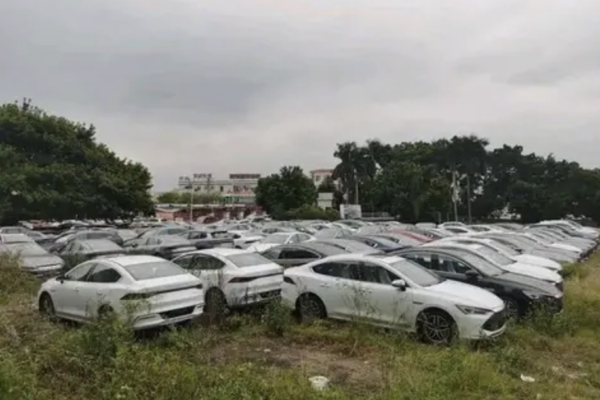In the fierce market competition, Chinese car dealers are experiencing an unprecedented crisis. According to the latest survey by the China Automobile Dealers Association, only 30.3% of dealers nationwide achieved their sales targets in the first half of this year, with only 29.9% actually making profits, reflecting the severe challenges faced by automobile sales terminals.
The China Automobile Dealers Association reported on Monday (the 18th) that the operational conditions of dealers in the first half of the year are not optimistic. A staggering 40.7% of dealers had sales targets between 70% and 100%, while 29% of dealers failed to reach the 70% mark. In terms of profitability, 52.6% of dealers suffered losses, with only 29.9% of them achieving profits, while the remaining 17.5% barely maintained a balance between income and expenses.
Significant differences in operational conditions exist among different types of brands. The survey indicated that independent new energy brands’ dealers are performing significantly better than traditional fuel car brands. Among them, 42.9% of new energy dealers are profitable, compared to only 25.6% of fuel car dealers.
Furthermore, in order to clear inventory, car dealers are forced to “cut prices to survive.” A whopping 74.4% of dealers sell new cars below the purchase price, with 43.6% of dealers even offering discounts of over 15%. Xiaozheng San, the president of the China Automobile Dealers Association, stated at the 2025 China Automobile Dealers Conference in Chengdu that, due to the imbalance of supply and demand and the transition to new energy, the phenomenon of “selling more but losing more” has become the norm in the industry.
Economic Observer reported that the difficulty in making profits has led many car dealers to choose to exit the sales network. Statistics from the China Automobile Dealers Association show that in 2024, the number of national 4S shops withdrawing from the network was 4419, marking the first negative growth in 4S shop size since 2021.
For a long time, the traditional 4S shop dealer model has been criticized by consumers for its opaque after-sales processes and deliberate exaggeration of vehicle faults. With intensifying market competition, the profit center of dealerships is being forced to shift towards after-sales service and financial insurance.
However, these businesses, with their opaque fee structures, further exacerbate consumer distrust towards dealerships, creating a vicious cycle.
In this background, Tesla pioneered the introduction of a direct sales model in China. Chinese homegrown carmakers like NIO and XPeng have followed suit by adopting a “de-4S” direct sales model, directly capturing market share from traditional dealerships.
Apart from the direct sales model, live-streaming car sales have also emerged as another force disrupting traditional dealerships. Starting in 2019, notable influencers like Viya and Li Xiang began live-streaming car sales. Viya achieved a sales volume of 1.9 million yuan in a 2-hour live stream, while Li Xiang promoted Changan cars and sold over 200 vehicles in a single session, with sales volume comparable to a 4S shop’s monthly sales.
The outbreak of the pandemic in 2020 accelerated this trend, with more non-celebrity live streamers joining the fray, further eroding the market share of traditional dealerships.
Facing enormous operational pressures, conflicts between dealers and car manufacturers are increasingly becoming public.
According to Taiwan’s Central News Agency, at the end of June this year, the automotive dealer associations in Shanghai, Jiangsu, Zhejiang, and Anhui jointly issued an open letter, calling on car manufacturers to help improve the operational difficulties and criticizing some manufacturers for forcing inventory pressures and indirectly requiring dealers to sell cars at lower prices, potentially violating China’s “Anti-Unfair Competition Law.”
Similar conflicts have occurred earlier. According to Economic Information Daily, in May last year, Porsche China faced dealer pressure due to high inventory, leading some dealers to stop deliveries and demand subsidies and changes in management from the headquarters.
In the same year, an official letter with a seal circulating on the internet showed that Beijing Hyundai dealers in Hunan decided to suspend deliveries and requested the factory to address inventory pressures and fulfill reward policies.
Amid supply-demand imbalances and new model disruptions, car dealers are facing an unprecedented life-or-death test. This transformation not only tests the adaptability of dealers but also challenges the cooperation relationship between car manufacturers and dealers.

